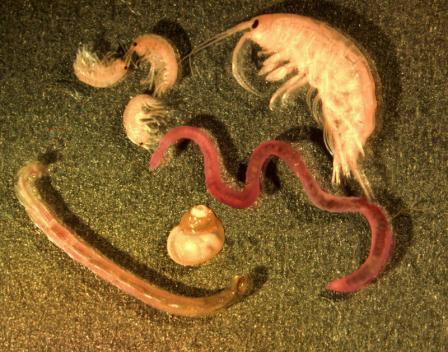Indicators: Benthic Macroinvertebrates

What are benthic macroinvertebrates?
Benthic (meaning “bottom-dwelling”) macroinvertebrates are small aquatic animals and the aquatic larval stages of insects. They include dragonfly and stonefly larvae, snails, worms, and beetles. They lack a backbone, are visible without the aid of a microscope and are found in and around water bodies during some period of their lives. Benthic macroinvertebrates are often found attached to rocks, vegetation, logs and sticks or burrowed into the bottom sand and sediments.
Why is it important to evaluate benthic macroinvertebrates?
Benthic macroinvertebrates are commonly used as indicators of the biological condition of waterbodies. They are reliable indicators because they spend all or most of their lives in water, are easy to collect and differ in their tolerance to pollution. Macroinvertebrates respond to human disturbance in fairly predictable ways, are relatively easy to identify in the laboratory, often live for more than a year and, unlike fish, have limited mobility. In fact, because they cannot escape pollution, macroinvertebrates have the capacity to integrate the effects of the stressors to which they are exposed, in combination and over time. Biologists have been studying the health and composition of benthic macroinvertebrate communities for decades.
What do benthic macroinvertebrates tell us about the condition of water?
Evaluating the abundance and variety of benthic macroinvertebrates in a waterbody gives us an indication of the biological condition of that waterbody. Generally, waterbodies in healthy biological condition support a wide variety and high number of macroinvertebrate taxa, including many that are intolerant of pollution. Samples yielding only pollution–tolerant species or very little diversity or abundance may indicate a less healthy waterbody. Biological condition is the most comprehensive indicator of waterbody health. When the biology of a waterbody is healthy, the chemical and physical components of the waterbody are also typically in good condition. In addition to benthic macroinvertebrates, scientists also evaluate algae and fish populations to come up with robust estimates of biological condition.
